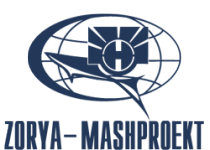The Future of the Ukrainian Defense Industry - Market Attractiveness, Competitive Landscape and Forecasts to 2023 - ResearchAndMarkets.com
The "Future of the Ukrainian Defense Industry - Market Attractiveness, Competitive Landscape and Forecasts to 2023" report has been added to ResearchAndMarkets.com's offering.
This report provides readers with detailed analysis of both historic and forecast defense industry values, factors influencing demand, the challenges faced by industry participants, analysis of industry leading companies, and key news.
Driven by the need to bridge the critical capability gap and restructure its armed forces, Ukraine has embarked upon a major defense modernization initiative and is attempting to reform the fighting capability of its armed forces along the western model of network centric maneuver warfare.
The Ukrainian government is also attempting to reorganize the country's armed forces and bring it up to NATO standards, and although the progress to this end has been extremely slow, the country is nevertheless expected to steadily transform its doctrine from the Soviet model to western NATO standards.
The country allocated US$3.2 billion for defense, and the allocations for national defense are likely to increase form US$3.7 billion in 2019 to US$7.6 billion in 2023, reflecting a CAGR of 19.53%. With one of the highest annual defense expenditure growth rates in the world, Ukraine is an attractive defense market.
Between 2014 and 2018, the country's capital expenditure allocation stood at an average of 19% of the total defense budget, and is expected to slightly decline to 18.1% over the forecast period. Overall, Ukraine is projected to spend a total of US$5.1 billion on the acquisition of military hardware between 2019 and 2023. The country is likely to allocate cumulative expenditure of US$27.7 billion over the forecast period.
Over the forecast period, Ukraine is expected to invest in modernizing its anti-aircraft warfare capabilities and is likely to invest in the acquisition of advanced air-defense systems. The Ukrainian Armed Forces are also likely to invest heavily in procuring advanced defense technologies such as Autonomous Vehicles and Unmanned Aerial Vehicles; communication and electronic warfare equipment, trainer helicopters and aircraft, and engineering vehicles like trenchers, excavators, and armored recovery vehicles.
Companies Mentioned
- Raytheon
- Antonov ASTC
- RPC Fort
- The Kharkiv Morozov Machine Building Design Bureau (KMDB)
- The Malyshev Plant
- AvtoKrAZ Holding Company
- Motor Sich
Topics Covered
1. Introduction
2. Executive Summary
3. Market Attractiveness and Emerging Opportunities
3.1. Current Market Scenario
3.2. Analysis of Defense Budget Allocation
3.2.1. The majority of Ukraine's defense budget is earmarked for revenue expenditure
3.2.2. Capital expenditure forecast to increase at a CAGR of 23.61% over 2019-2023
3.2.3. Per capita defense expenditure expected to increase over the forecast period
3.3. Homeland Security Market Size and Forecast
3.3.1. Ukrainian homeland security market expected to grow at a CAGR of 18.06% over the forecast period
3.3.2. Measures to curb illegal activities such as drug trafficking, human trafficking, and organized crime to drive homeland security expenditure over the forecast period
3.3.3. Ukraine is highly affected by terrorism
3.3.4. Ukraine faces a high level of threat from terrorist organizations
3.3.5. Ukraine has a terrorism index score of 6.6
3.4. Benchmarking with Key Global Markets
3.4.1. Ukraine to be one of the largest defense spenders in the Eastern Europe
3.4.2. The US has the largest defense expenditure in the world
3.4.3. Ukrainian defense expenditure expected to reach 4.4% of GDP by 2023
3.5. Market Opportunities: Key Trends and Growth Stimulators
3.5.1. Top 10 Defense Sectors by Value (US$ Million) - Projections over 2018-2023
3.5.2. Transport Aircraft
3.5.3. Land-based C4ISR
3.5.4. Critical Infrastructure Protection - Physical Security
4. Defense Procurement Market Dynamics
4.1. Import Market Dynamics
4.1.1. A relatively small defense budget limits Ukraine's defense imports
4.1.2. Canada accounted for 47.4% of Ukrainian defense imports during 2013-2017
4.1.3. Armored vehicles accounted for the majority of Ukrainian defense imports
4.2. Export Market Dynamics
4.2.1. Ukraine exports a major portion of its domestic defense production
4.2.2. Russia, China, and Thailand emerged as the largest importers of Ukrainian defense equipment
4.2.3. Missiles, sensors and air defense systems were the most exported defense goods
5. Industry Dynamics
6. Market Entry Strategy
6.1. Market Regulation
6.1.1. Defense sector liberalization bodes well for domestic defense industry
6.2. Market Entry Route
6.2.1. Budgeting Process
6.2.2. Procurement Policy and Process
6.2.3. Joint development of defense goods provides investors with a market entry opportunity
6.2.4. Foreign investors can enter the industry through direct sales
6.3. Key Challenges
6.3.1. Small defense budget offers equipment manufacturers limited investment potential
6.3.2. Lack of necessary infrastructure impedes growth of domestic defense industry
6.3.3. Corruption and a lack of transparency discourages investors from entering the market
7. Competitive Landscape and Strategic Insights
8. Competitive Landscape and Strategic Insights
9. Business Environment and Country Risk
For more information about this report visit https://www.researchandmarkets.com/research/xl29wv/the_future_of_the?w=4
View source version on businesswire.com: https://www.businesswire.com/news/home/20190205005752/en/




